High-Resolution Younger Dryas Environmental
Variability:
A Comprehensive Assessment from Mid-North America
P.I. Irina P. Panyushkina
and co-P.I. Steven W. Leavitt (Support from NSF ATM-0213696)
The
warming from Late Glacial to Early Holocene was interrupted by an abrupt,
millennial-length cold climate excursion known as the Younger Dryas (YD) event. Effects of this event seem to be widespread,
but knowledge of the character of the YD in Europe far exceeds that of other locations such
as mid-North America America
Floating
ring-width chronologies are being developed for each site/time, using radiocarbon
dates to position the sites in the Late Glacial-Early Holocene time frame.
They will not produce a single chronology, but will provide an effective
ensemble of chronologies over the 4,000 14C-yr time interval with
which to investigate fine-scale climate change.
Contingent on resources, high-resolution environmental information
will be extracted at each site/time using ring-width chronologies, event chronologies
(eg, frost rings, light rings, reaction wood), stable isotope analysis (dD, d13C and d18O) and xylem anatomy measurements (radial lumen diameter, cell-wall thickness).
Sophisticated spectral analysis techniques will be applied to the ring-width
chronologies to estimate frequency of climate-related variability at particular
band-widths, especially associated with global teleconnections (eg, ENSO,
NAO, PDO, AO). Finally, high-resolution radiocarbon records
will be developed to precisely match existing radiocarbon chronologies by
“wiggle matching”, and more importantly to exploit fine-scale differences
between existing records from Europe , Japan Australia Cariaco Basin
This systematic study will
provide the first high-resolution portrait of the Late Glacial/Early Holocene
transition in mid-N.
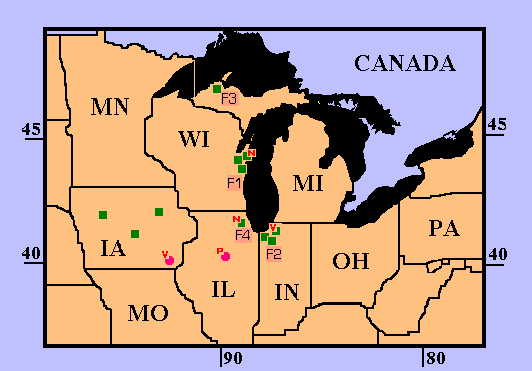
MAP. Location of buried wood sites (tree-ring sites)
n- conifer and l-
deciduous wood.
Two Creeks (13,500-13,800 Cal y BP)
Fig. 1. Sample Depth of Two Creeks site chronology from 3 collections: 296-year length, 55 trees, Std. Dev. of tree-ring indices 0.22

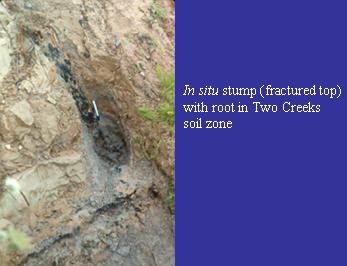

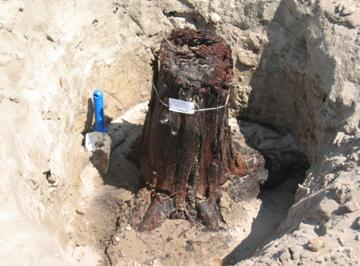
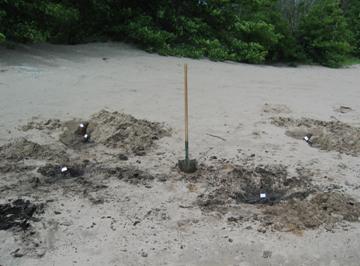
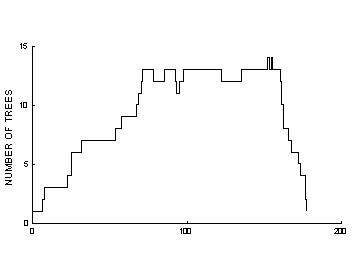
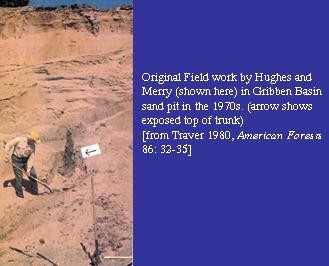
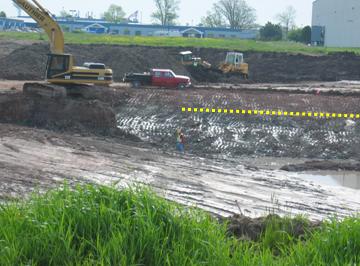

Photo
5,6.
Ditch profile with two layers of buried peat with wood (right). (photos by
M. Zoellner)
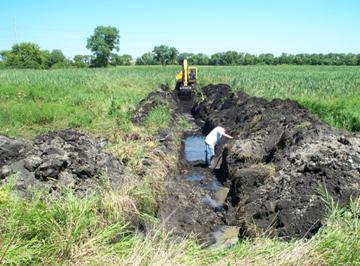
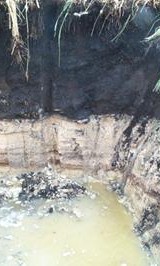
Fig.
4.
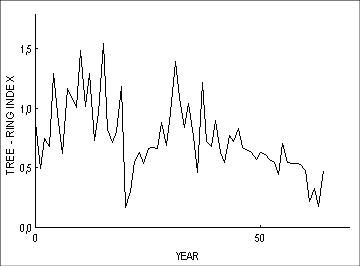
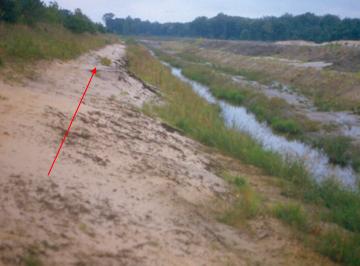
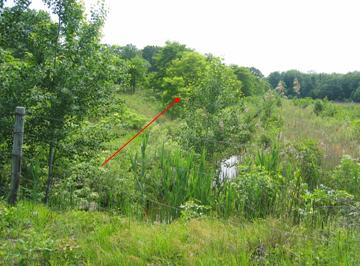

Publications
and Presentations: